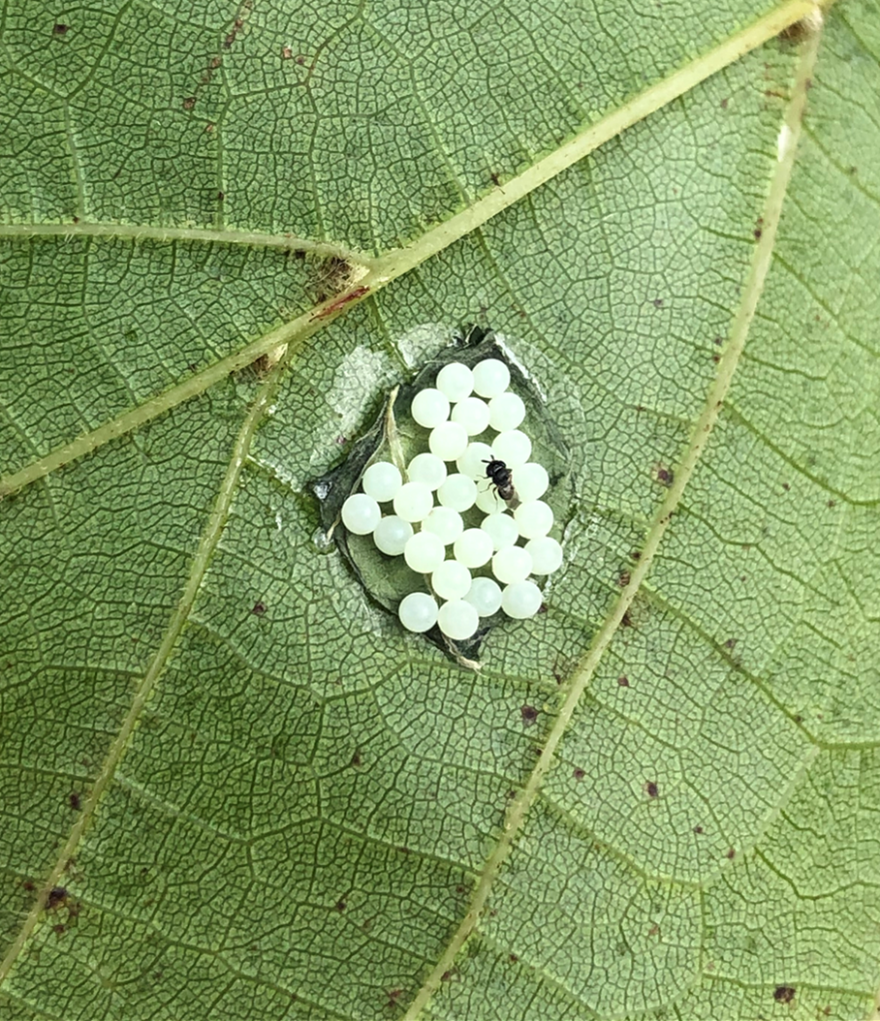An update on increasing the abundance of samurai wasps for biological control of brown marmorated stink bugs
Redistribution efforts of an important natural enemy of brown marmorated stink bugs show signs of success. Over 27,000 samurai wasps have been reared and released across 34 sites in Michigan and we have a second year of evidence of overwintering success.

A tiny wasp, about as big as a sesame seed, that lays its eggs into the eggs of stink bugs is the most promising biological control agent against the brown marmorated stink bug (BMSB). Originating from the same part of the world as BMSB, the samurai wasp (Trissolcus japonicus) has made its way to North America, probably emerging from egg masses accidentally shipped to the U.S. After it was discovered in Michigan in 2018, we began a program to rear and redistribute more of this important natural enemy of BMSB in the state.
Unlike the samurai wasp, which is able to attack up to 80% of BMSB eggs in Asia, our native parasitoid wasps are much less efficient, with attack rates recorded of less than 10% in North America. This is why wherever the samurai wasp has been discovered, scientists are very interested in building up local populations through redistribution or augmentation programs in order to accelerate the biological control of BMSB.
Extensive sampling in 2018 and 2019 found that the samurai wasp’s distribution was very limited in Michigan. To speed up the biological control of BMSB, we became interested in bolstering samurai wasp populations across the state. From that first live catch of a samurai wasp, we started rearing the parasitoid in the lab for redistribution in 2019 and continued our efforts in 2020 and 2021 to augment populations. To date, over 27,000 samurai wasps have been reared and released across 34 sites (Figure 1).
Through these releases, we have been testing different factors that influence the establishment success of a biological control agent like the samurai wasp. This information will allow us to develop more effective strategies for reducing pest populations. In 2021, we asked how crop complexity impacts wasp establishment. We released this natural enemy of BMSB at polyculture and monoculture sites to test whether higher crop complexity aids in the establishment success of the samurai wasp. Additionally, we continued monitoring 2019 and 2020 release sites that tested whether release size and frequency impacted establishment success.
In 2021 alone, we released 20,000 wasps across Michigan as part of this study. We used sentinel BMSB egg masses, glued to the underside of leaves for 48 hours, to monitor for the presence of the samurai wasp at each site (Figure 2). We recaptured the samurai wasp at two previous release sites (2019 and 2020), as well as at three of the 2021 release sites (Figure 1).

These findings tell us that samurai wasps are successfully overwintering and maintaining populations years after a release. In the future, we hope our research helps unveil why some sites may be better suited for samurai wasp populations. Next year’s monitoring efforts will give us a better understanding of whether these establishment differences are influenced by crop complexity.
In the meantime, our efforts to increase the distribution and density of the samurai across Michigan are working. It will still likely take years until we start to see any impact on BMSB densities, but these releases could significantly help curb BMSB populations in Michigan.
This research is funded by the Department of Entomology at Michigan State University, MSU AgBioResearch, Project GREEEN, the Michigan Apple Committee, Michigan State Horticultural Society and Nestle North America (Gerber).



 Print
Print Email
Email
